Piedmont Medical Center – Fort Mill, Fort Mill, SC
New community-based hospital in the heart of Fort Mill.
Contributors
Kevin Harney, AIA, NCARB
Tom Bauman, IIDA, ASID, NCIDQ, EDAC
Nearly two decades after seeking Certificate of Need (CON) approval from the State of South Carolina to build a new hospital in the town of Fort Mill, Piedmont Medical Center – Fort Mill opened its doors in September 2022—the first community hospital in the growing suburb. With integrated project delivery principles in mind, ESa was hired to provide architecture and design services, along with general contractor, Robins & Morton, for the new, state-of-the-art facility. From the facility’s inception in the fall of 2019, our team has guided the design and construction throughout the life of the project.
The project’s design began in early 2020, but was interrupted due to the COVID-19 pandemic. After the project resumed in the fall of 2020, our team was challenged to break ground in January 2021 to meet the approved CON deadline requirements. The pandemic also challenged the team to complete the design through a series of virtual meetings with the hospital users. This required an integrated team approach between hospital leadership, design team, and contractor to meet the necessary construction milestone dates so that the hospital could be completed by September 2022. The integrated project team utilized a fast-track delivery method with a target-value design approach to control costs and meet the aggressive construction schedule.
The 199,331 square-foot, 100-bed hospital features operating rooms, catheterization labs, radiology, emergency, obstetrics, medical/surgical services, administrative and support services. The campus plan also included a 60,000 square-foot, three-story medical office building that opened simultaneously with the hospital. Designed with future expansion in mind, the facility allows for horizontal growth of key service lines such as emergency, imaging and surgery. This planning will allow for expansion, while minimizing operational disruption to existing services.
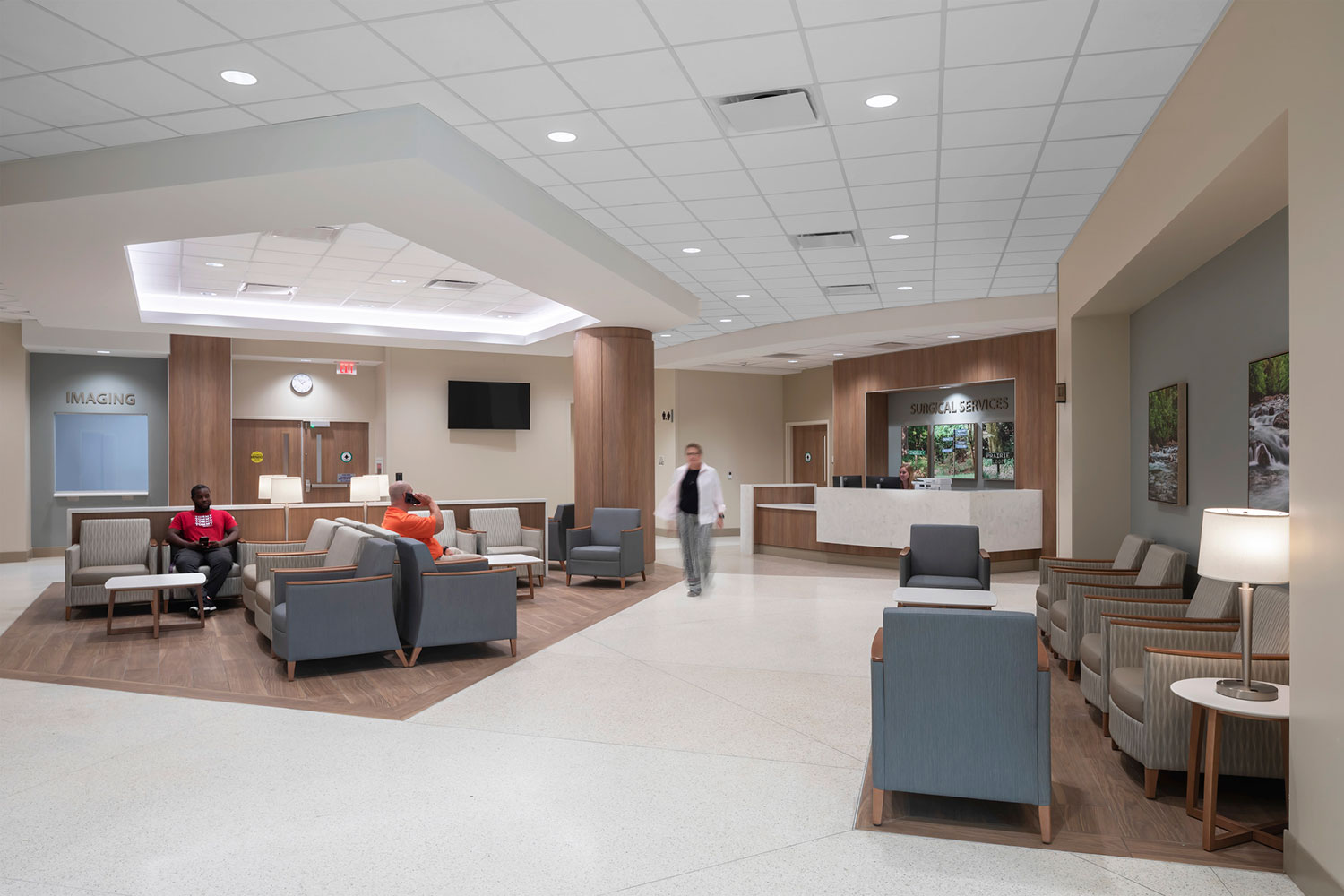
Budget-friendly design solutions within a lean, dense footprint
With the focus on human experience and operational efficiency coupled with the challenges of rising construction costs, it is critical that facilities are designed to maximize each dollar. Our team utilized benchmark data and cross-referenced that information against the specific needs of this hospital, providing informed data to the leadership team to make final decisions. To meet the schedule and stay within budget, our team identified critical services to be located within the hospital and those that could be in the medical office building.
The strategy resulted in a Lean, dense hospital footprint with spaces that are designed to be flexible, shared and collaborative. During this unprecedented time of the COVID-19 pandemic and historic escalation in material and construction costs, our integrated team has worked together, to deliver a design that meets the hospital system’s vision for the greenfield hospital.
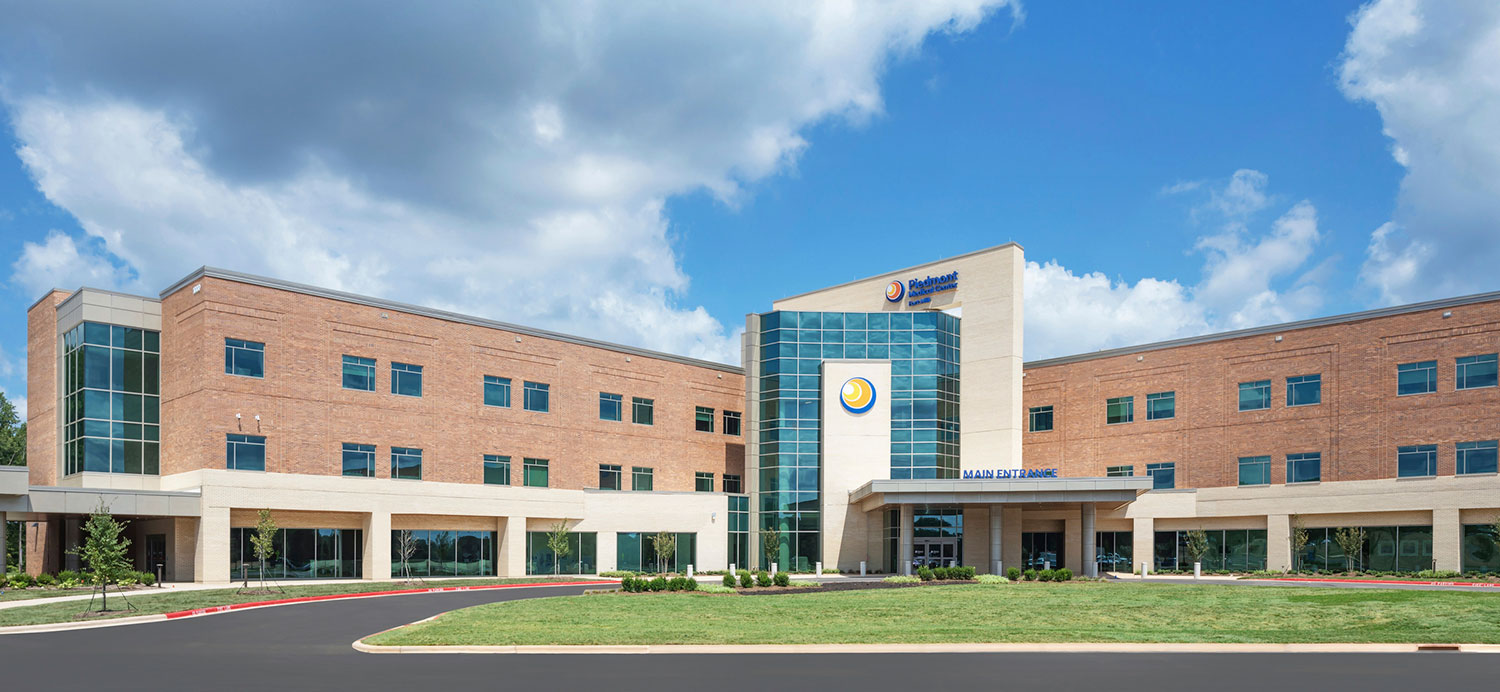
Keeping Community at the Heart of the Design
The hospital is strategically sited to take advantage of the scenic views. The community has a rich history and roots in textiles and Piedmont Medical Center – Fort Mill is seamlessly integrated to not only fit in within the community through its use of materials, but also take advantage of the outdoor views, natural light and amenities. The exterior architecture is very much reflective of the community and this theme is thoughtfully carried inside with a simple, modest design using cost-effective material, warm colors with pops of color and patterns in the artwork and furniture. Design of the hospital and medical office building drew inspiration from the beautiful lakes, hardwood forests, and Anne Springs Close Greenway nature preserve.
Piedmont Medical Center – Fort Mill has strong ties to the Fort Mill community and wanted an interior design that highlighted this connection. The team used large-scale graphics with local imagery, created visually interesting destinations, and added accent walls throughout the space that incorporated lighter tones and various textures. A local artist, Emily Barton, was commissioned to design and create acrylic abstract canvas panels to hang in the lobby. In addition to creating the panels, Emily also designed a spiraling, recycled glass installation to play off the color palette and organic movements of the paintings. Each of the 400+ glass pieces were cut into rings from recycled glass bottles, and then hand fused into organic circular shapes using several small-scale microwave kilns. The spiraling composition was designed to fit the architecture of the space, highlighting the height and cylindrical nature of the column behind the installation. The glass installation also played off other natural tones, textures and spiraling compositions within the lobby.
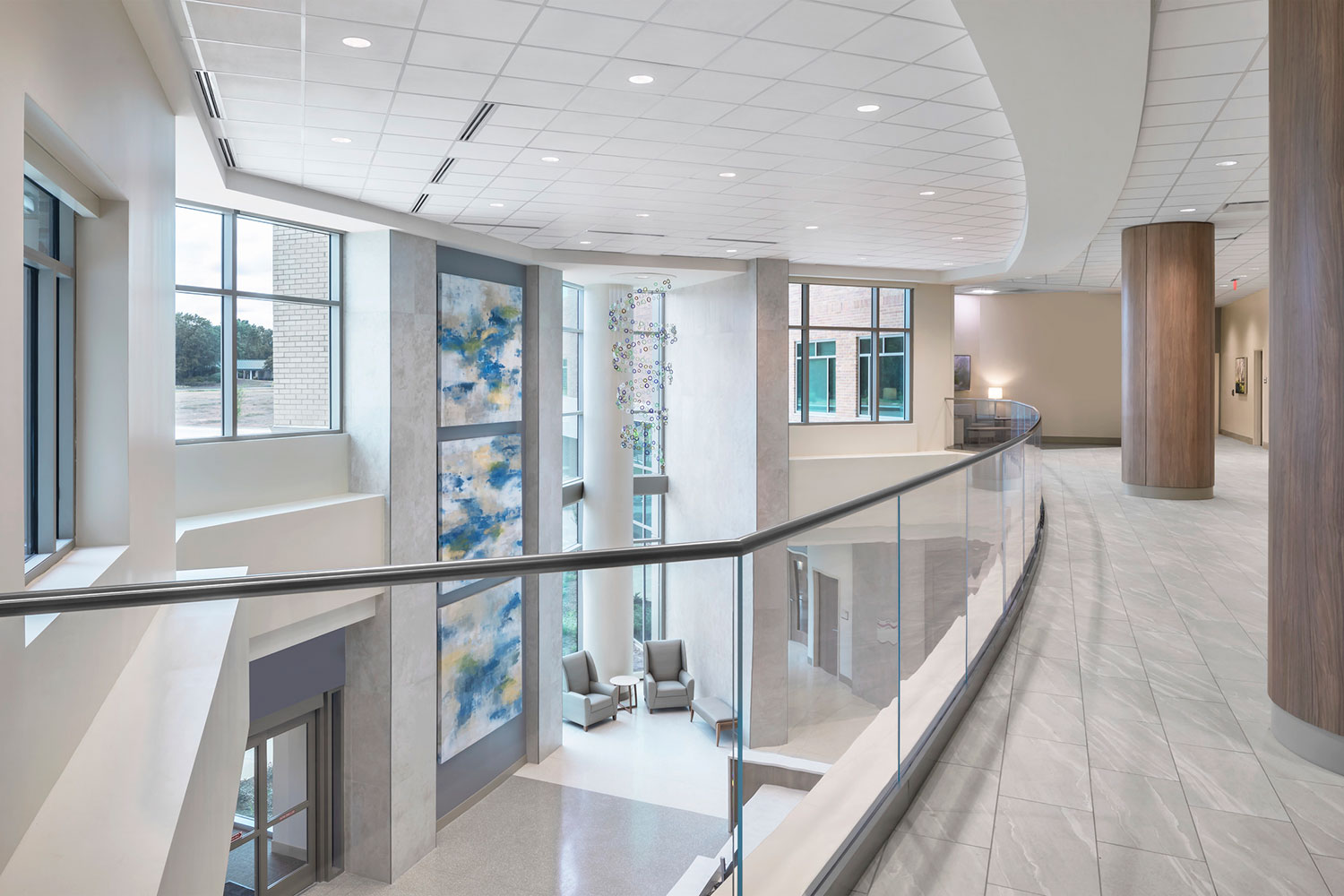
Safety, above all else
Our design team prioritized incorporating safety elements throughout all spaces in the hospital, for both patients and staff. Working with the hospital leadership, the team selected flooring materials specifically designed to reduce slips and falls, installed easily cleanable surfaces to reduce infection risks, and conveniently located nursing support areas to decrease the number of steps staff must take to deliver care. Services were conveniently located to minimize travel distances and provide for easy wayfinding.
To minimize staff error and provide consistency with patient care areas, our the team focused on providing standardization within the design. For example, support spaces such as medication rooms were standardized where possible throughout the patient care areas for staff convenience and familiarity. The team also evaluated lighting and noise reduction options in critical staff work areas to minimize staff distractions from the task at hand.

In the individual patient rooms, the team focused on patient and family comfort through the use of natural lighting and warm materials such as wood-look flooring and headwalls. Patient headwalls were configured with strategic placement of the medical gases and power outlets, allowing for standardization from room to room. The patient room layout provides a dedicated staff area and separate family area adjacent to the exterior window of the room. In the patient corridors, the team created alcoves for equipment, to help reduce clutter within the corridor and maintain the code required eight-foot clearance.
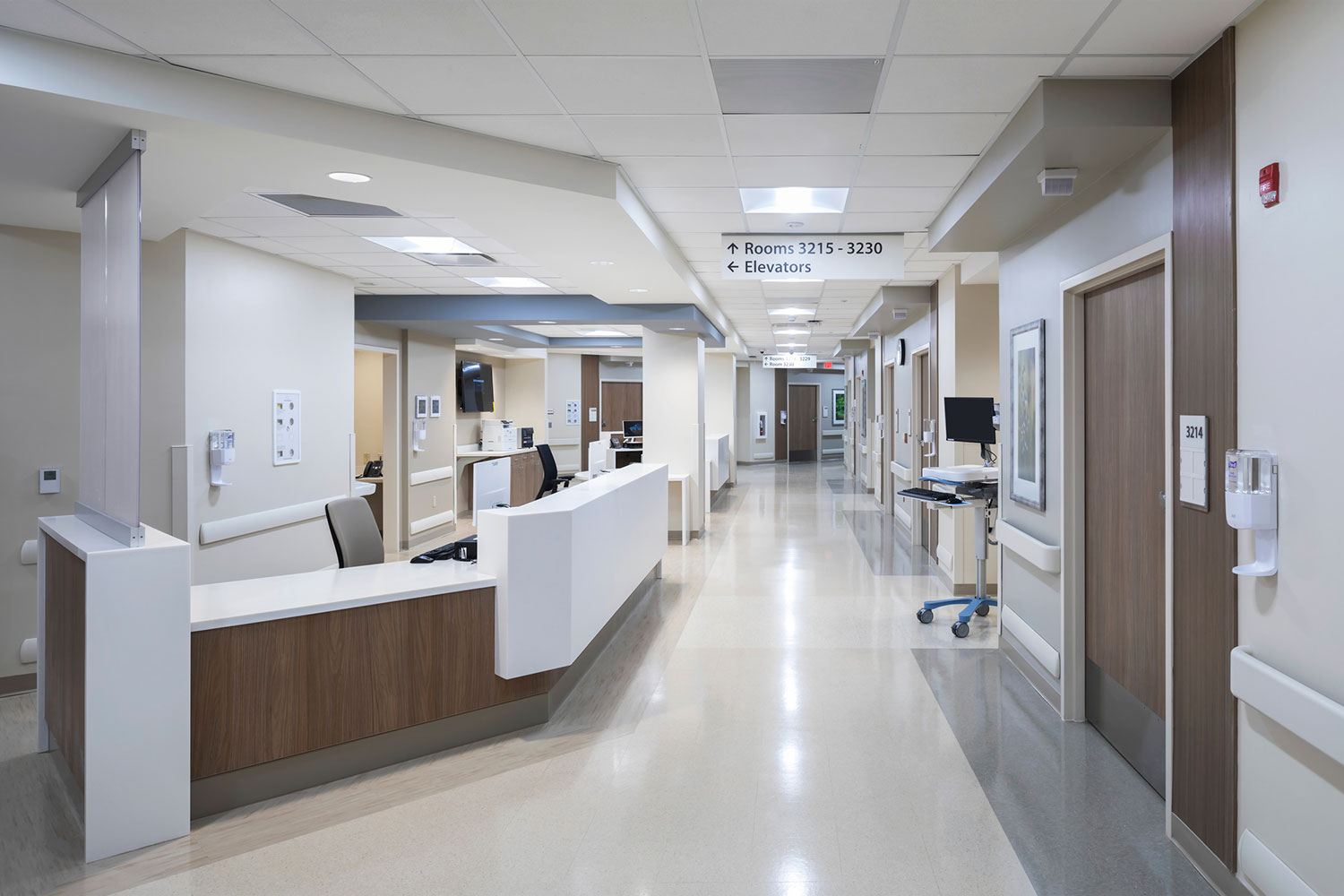
Nurse stations are located in the center of each floor for increased visibility and efficient operations, especially within the intensive care unit. Within the ICU, the physician dictation areas and the medication rooms were again centrally located and incorporated glass, giving staff visibility across the unit. In the medical/surgical patient care unit, the team centralized nursing workstations, but the medication room and clean supply room were decentralized so that they were closer to the patient care areas—continuing the Lean concept of eliminating waste within the staff movement.
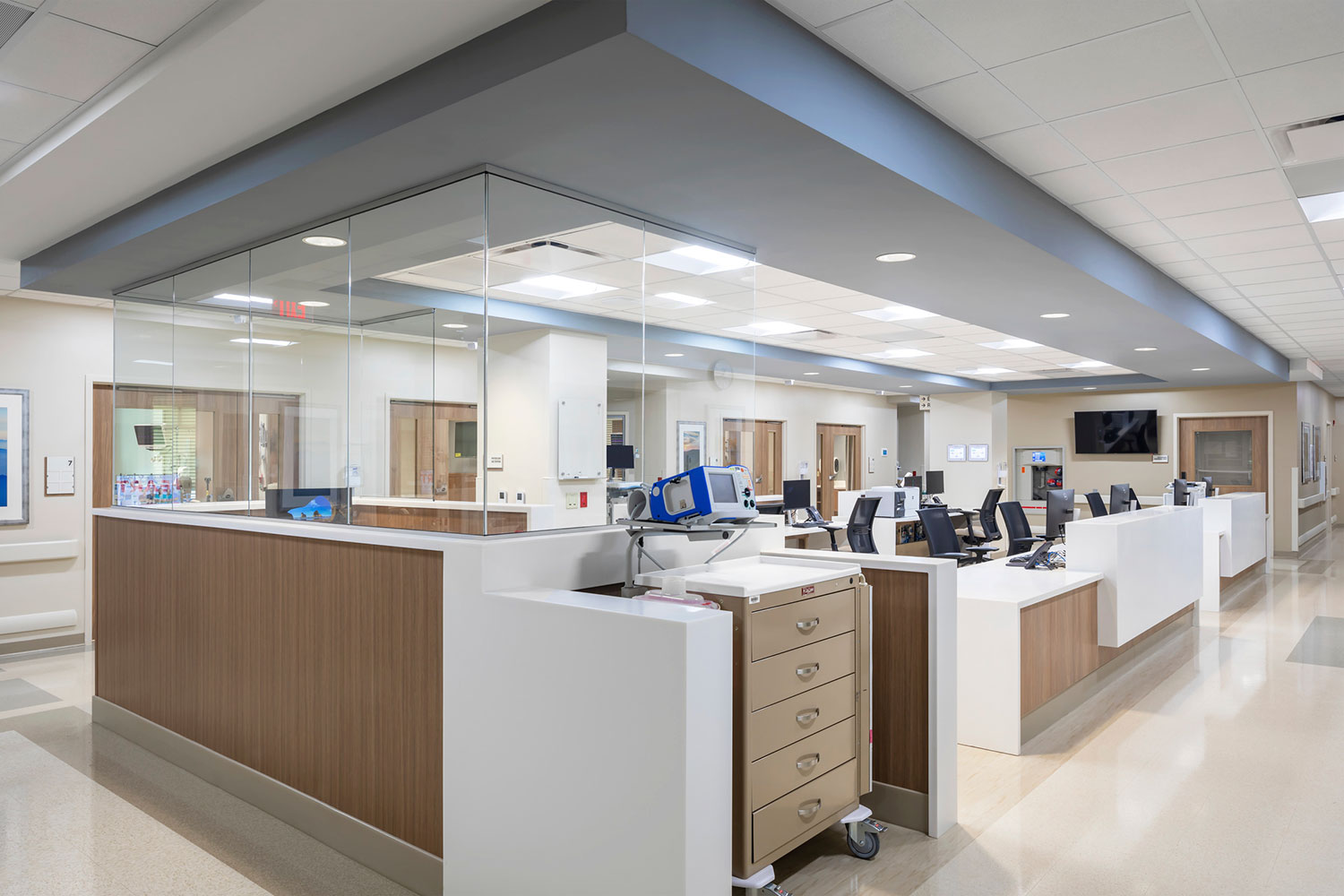
“It was a pleasure to collaborate with ESa on the creation of Piedmont Medical Center – Fort Mill. The team was highly engaged, team oriented, and clearly the content experts in their field. Their understanding of modern healthcare dynamics is what made the experience efficient and pleasant. We are grateful for their dedication to this project.” —Chris Mitchell, CEO of Piedmont Medical Center – Fort Mill